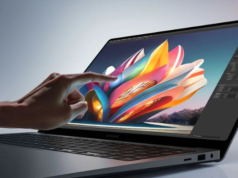Samsung’s Galaxy S25 series, slated for release in early 2025, is expected to bring a host of advanced features and innovations to the smartphone market. Yet, while the lineup promises to excel in areas such as display technology and camera performance, recent reports indicate that its charging capabilities might not meet the expectations of modern consumers. Despite being a flagship series, the Galaxy S25 lineup could fall short in one crucial area: fast charging.
Slow Charging Speeds Continue to Disappoint
Over the years, Samsung has faced criticism for its conservative approach to fast charging technology, and it seems the Galaxy S25 series is no exception. Leaks and certifications suggest that Samsung is sticking with its current charging standards, offering little to no improvement. The Galaxy S25+ and Galaxy S25 Ultra are rumored to support 45W wired fast charging, a figure that remains unchanged from their predecessors.

The base model, the Galaxy S25, appears to fare even worse. It is expected to feature only 25W wired charging and a dismal 9W wireless charging. This marks a significant downgrade from the Galaxy S24, which offered 15W wireless charging. In a market where even mid-range and budget devices often boast faster charging speeds, Samsung’s reluctance to innovate in this area is becoming increasingly noticeable.
Samsung’s Reasoning: Prioritizing Battery Longevity
Samsung has justified its cautious approach to fast charging by emphasizing battery health and longevity. The company has stated that higher charging speeds can negatively impact a battery’s lifespan, leading to diminished performance over time. While this concern was valid in the early stages of fast-charging technology, advancements in battery design and charging systems have largely mitigated these issues.
Brands like Xiaomi and Oppo, for example, have developed fast-charging technologies that deliver speeds exceeding 100W while maintaining battery health through enhanced safety measures and optimized charging algorithms. These advancements demonstrate that rapid charging can be achieved without compromising the long-term usability of a smartphone.
By continuing to limit charging speeds, Samsung risks appearing out of touch with consumer expectations, especially in a market where convenience and speed are increasingly prioritized.
Falling Behind Competitors
The Galaxy S25’s conservative charging speeds are even more glaring when compared to its competition. Chinese smartphone brands, including Oppo, Vivo, and Xiaomi, are pushing the envelope with charging technologies that support speeds of up to 200W. Even a more modest standard, such as 80W fast charging, would represent a significant upgrade for Samsung devices.
Adding to the frustration, the base Galaxy S25 model struggles to keep up with much cheaper alternatives in the Android market. Budget smartphones often feature faster charging options, making the $700 price tag of the Galaxy S25 hard to justify. Even Apple, traditionally criticized for lagging behind in charging speeds, has started to match Samsung’s offerings, further diminishing the South Korean giant’s competitive edge.

Samsung’s emphasis on excelling in areas like camera quality and display technology is commendable, but fast charging has become a vital quality-of-life feature for many users. A device’s charging speed directly impacts its daily usability, and consumers now expect flagship models to deliver on all fronts, including charging performance.
A Missed Opportunity for Innovation
While the Galaxy S25 series is likely to excel in several key areas, its lackluster charging capabilities could alienate a segment of its user base. For many consumers, charging speed has become a defining feature, especially for those with demanding schedules or heavy smartphone usage.
By choosing not to innovate in this area, Samsung risks falling further behind competitors that are actively investing in faster, more efficient charging technologies. While the company’s commitment to battery longevity is understandable, its refusal to adapt to market trends could make its flagship devices less appealing in an increasingly competitive industry.
Conclusion
The Galaxy S25 series will undoubtedly offer cutting-edge features and retain Samsung’s reputation for high-quality design and performance. However, its charging speeds could prove to be a significant letdown for consumers expecting a well-rounded flagship experience.
In an era where convenience and efficiency are highly valued, Samsung’s decision to stick with moderate charging speeds may lead potential buyers to reconsider their options. As competitors continue to push the boundaries of charging technology, Samsung’s cautious approach risks leaving its devices looking outdated in one of the most practical aspects of smartphone functionality. While the Galaxy S25 lineup will shine in many areas, its slow charging speeds could tarnish an otherwise impressive offering.






